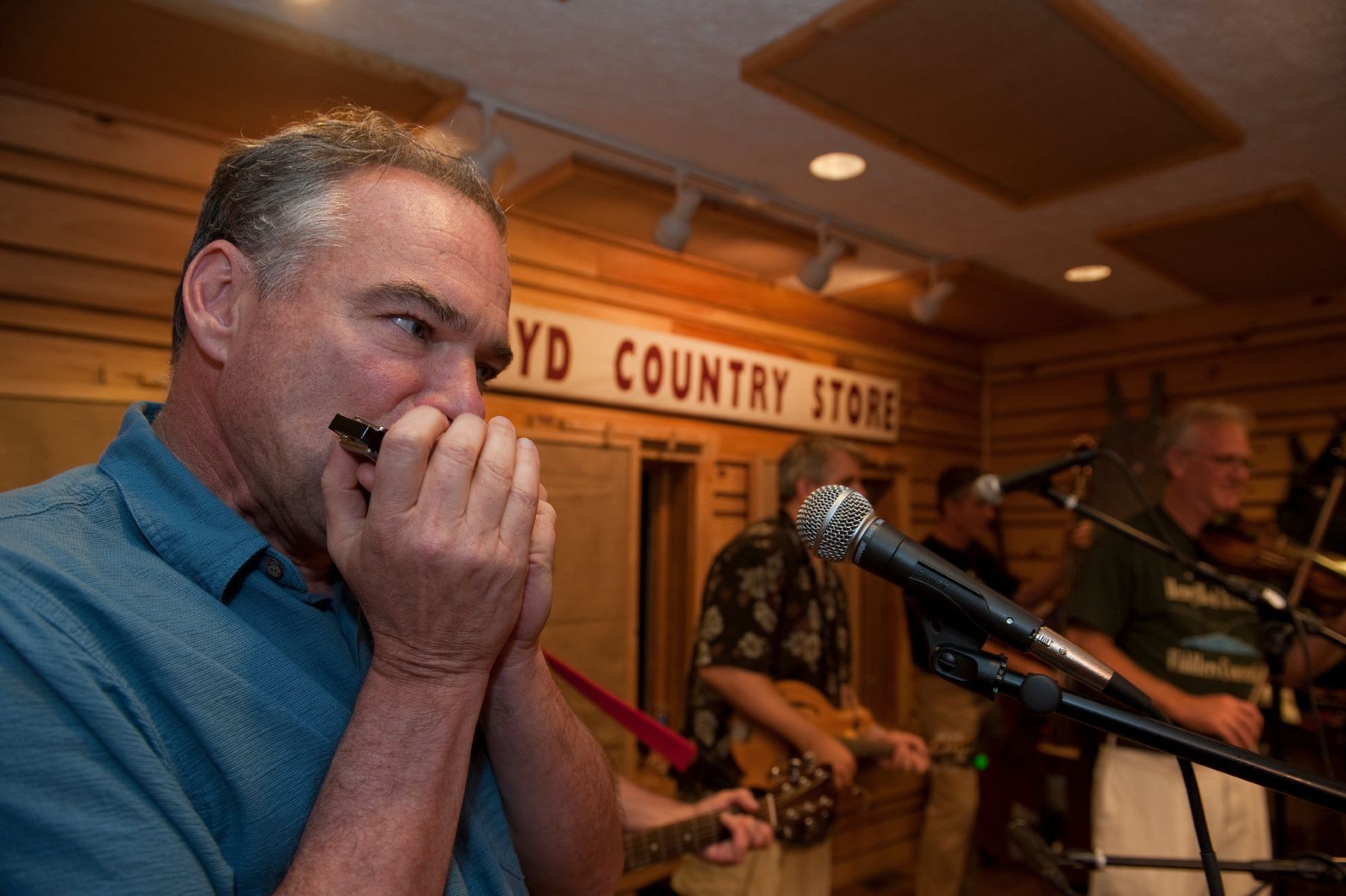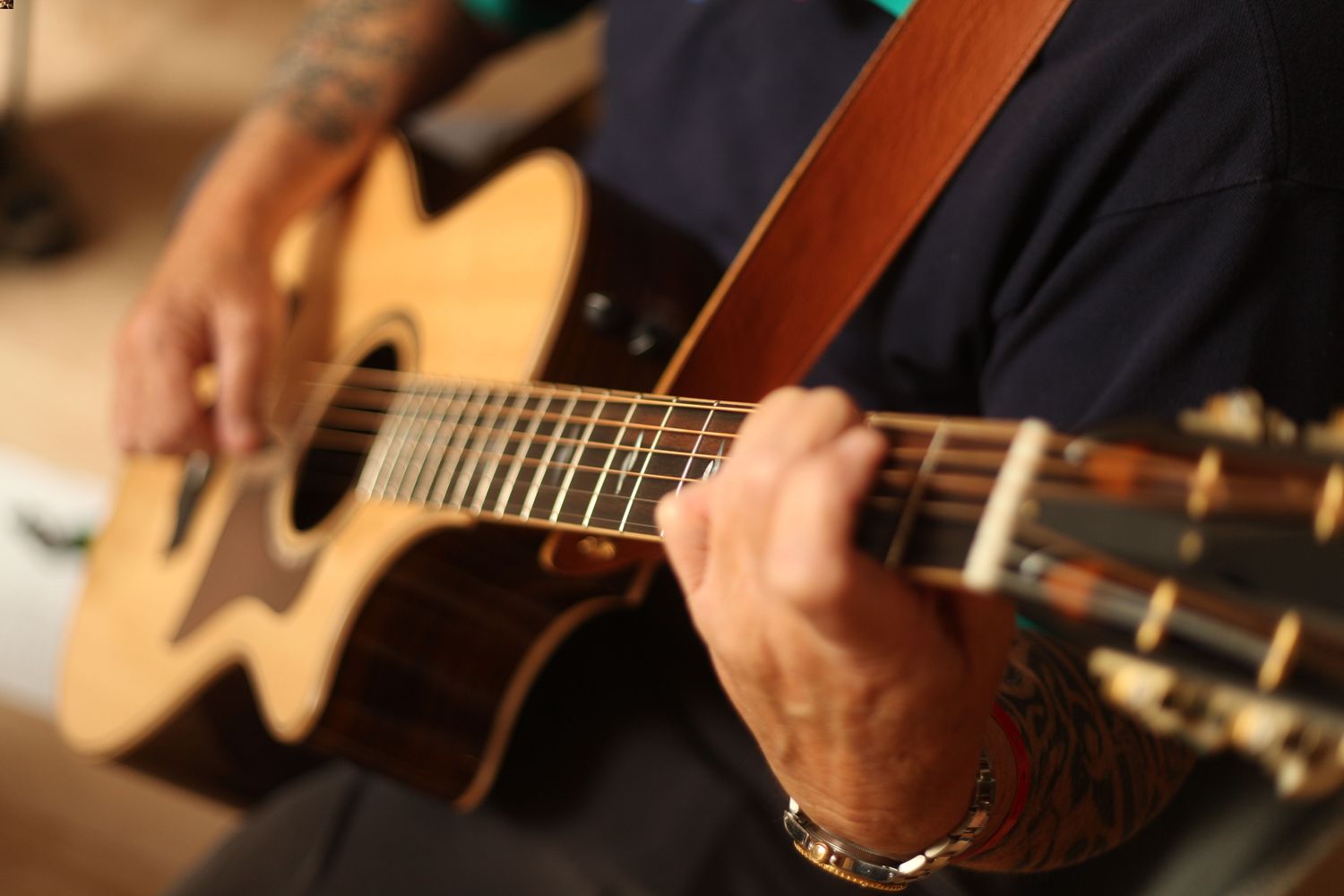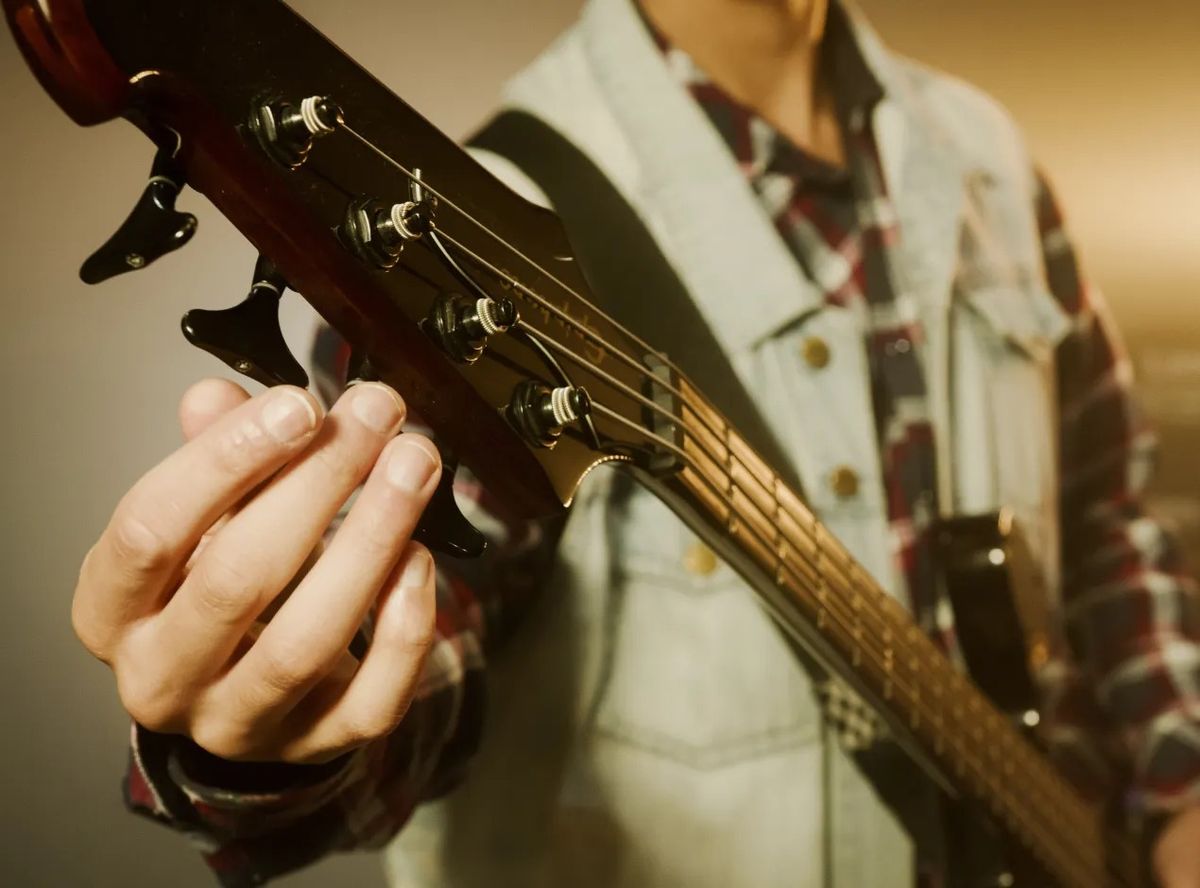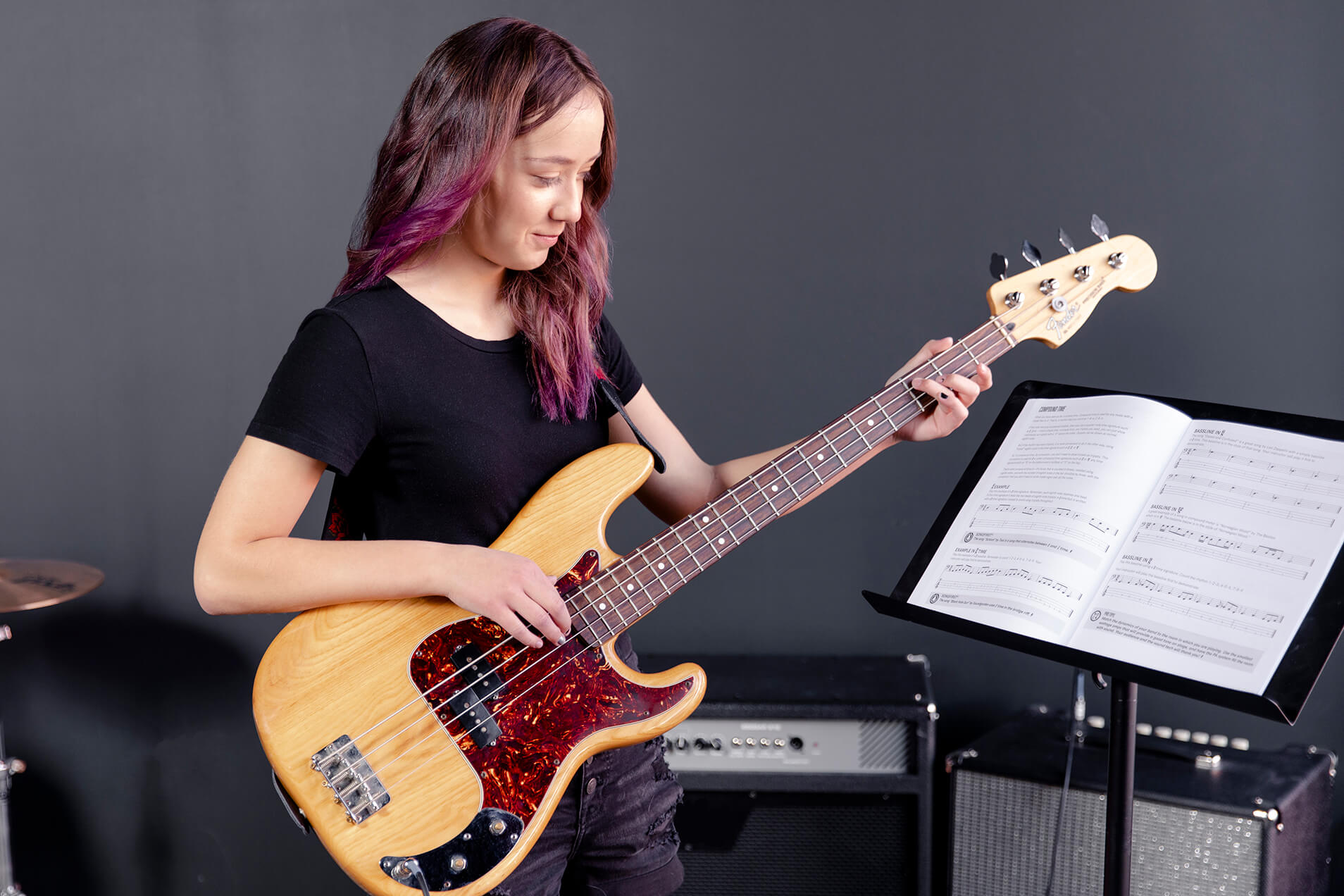Home>Instruments>Harmonica>Learn How To Play The Harmonica


Harmonica
Learn How To Play The Harmonica
Modified: February 3, 2024
Learn how to play the harmonica with our comprehensive tutorials and beginner-friendly tips. Master the art of playing the harmonica and impress others with your musical skills.
(Many of the links in this article redirect to a specific reviewed product. Your purchase of these products through affiliate links helps to generate commission for AudioLover.com, at no extra cost. Learn more)
Table of Contents
Introduction
The harmonica is a versatile and expressive musical instrument that is enjoyed by people of all ages and musical backgrounds. Whether you’re a complete beginner or an experienced musician looking to expand your repertoire, learning how to play the harmonica can be a rewarding and fulfilling experience.
In this comprehensive guide, we will take you through the steps of learning to play the harmonica, from choosing the right harmonica to mastering advanced playing techniques. We will provide you with tips, techniques, and resources to help you navigate your harmonica-playing journey.
Playing the harmonica is not only a fun and enjoyable hobby, but it also offers a range of benefits. It can improve your lung capacity, strengthen your breathing muscles, and enhance your overall respiratory health. Additionally, playing the harmonica can boost your creativity, improve your hand-eye coordination, and provide a sense of relaxation and stress relief.
So, whether you have a desire to play the blues, folk, rock, or any other genre, this guide will equip you with the knowledge and skills needed to start playing the harmonica like a pro.
Before we delve into the specifics of playing the harmonica, let’s first understand the different types of harmonicas available.
Photo by John McCoy on Unsplash
Choosing the Right Harmonica
When it comes to playing the harmonica, choosing the right instrument is crucial. There are several factors to consider when selecting a harmonica that suits your playing style and musical preferences.
The first decision you’ll need to make is whether you want a diatonic harmonica or a chromatic harmonica. Diatonic harmonicas are the most common type and are widely used in blues, rock, and folk music. They are designed to play in a specific key and have a limited range of notes.
On the other hand, chromatic harmonicas have a sliding button that allows players to access all the notes of the chromatic scale. They are more versatile and suitable for playing a wide range of musical genres.
Once you’ve decided on the type of harmonica, the next step is to choose the key. The key of the harmonica determines the base note that is produced when you blow or draw air through it. It is essential to choose the right key that suits the style of music you want to play. Common keys for diatonic harmonicas include C, G, and A, while chromatic harmonicas are often available in all 12 keys.
Another important consideration is the brand and quality of the harmonica. Well-known brands like Hohner, Lee Oskar, and Seydel are trusted for their durability and excellent sound quality. Investing in a higher quality harmonica will ensure better playability and longevity.
Lastly, choose between plastic or metal combs. The comb is the part of the harmonica that holds the reeds. Plastic combs are lightweight, hygienic, and easier on the lips, while metal combs are more durable and provide a unique, crisp tone.
When starting out, it’s recommended to begin with a basic, affordable harmonica. This will allow you to get familiar with the instrument and determine if playing the harmonica is something you want to pursue further. As you progress and develop your skills, you can invest in higher-quality harmonicas tailored to your specific needs.
Remember, choosing the right harmonica is the first step towards embarking on your harmonica-playing journey. Take the time to research, test out different harmonicas, and seek advice from experienced players or music stores to find the perfect harmonica for you.
Photo by Dương Trần Quốc on Unsplash
Holding the Harmonica
Before you start playing the harmonica, it’s crucial to learn the proper way to hold the instrument. Holding the harmonica correctly allows for better breath control, ease of movement, and optimal sound production.
Here are the steps to hold the harmonica in the correct position:
- Place the harmonica in your left hand if you are right-handed, or your right hand if you are left-handed.
- Position your thumb on one side of the harmonica, resting it against the bottom cover plate.
- Wrap your fingers around the harmonica, with your index finger on the top cover plate and your other fingers supporting the back.
- Your hand should be cupping the harmonica, leaving enough space for easy access to the holes.
- Keep your hand relaxed and comfortable, allowing for easy movement along the harmonica as you play.
It’s important to find a comfortable and natural grip that works for you. Experiment with different hand positions and angles to determine the most comfortable and ergonomic setup.
When holding the harmonica, make sure to leave a small gap between the harmonica and your lips. This allows for proper airflow and prevents any unnecessary muffling of the sound. You can achieve this by slightly tilting the harmonica upwards or downwards in your hand.
Additionally, it’s essential to maintain good posture while playing the harmonica. Sit up straight and relax your shoulders to ensure unrestricted airflow and easy breath control. Remember to keep your arms and wrists relaxed to allow for smooth movement across the harmonica.
As a beginner, it may take some time to get used to holding the harmonica correctly. Practice holding the harmonica in the proper position regularly to develop muscle memory and comfort.
Taking the time to learn how to hold the harmonica properly will set a solid foundation for your playing technique. It will contribute to better control, breath modulation, and overall sound quality as you progress in your harmonica-playing journey.
Photo by Austin Distel on Unsplash
Getting Familiar with the Harmonica
Before you dive into playing actual notes on the harmonica, it’s important to get familiar with its layout and basic components. Understanding the anatomy of the harmonica will help you navigate the instrument more effectively and efficiently.
Here’s an overview of the main parts of a harmonica:
- Cover Plates: These are the metal plates that encase the reed chambers.
- Comb: The comb is the main body of the harmonica and can be made of plastic or metal. It houses the reeds and is responsible for the sound production. It has holes where you blow or draw air to create sound.
- Reed Plates: These are thin metal plates with reeds attached to them. The reeds vibrate when air is blown or drawn through them, producing sound.
- Reeds: The reeds are thin metal strips that are responsible for producing the sound when air passes through them. They are mounted onto the reed plates and vibrate at different pitches to create different notes.
- Covers: The covers are the metal plates that hold the reed plates and are attached to the comb.
- Draw and Blow Holes: The harmonica has holes on the top and bottom cover plates. These holes are responsible for producing different notes when you blow or draw air through them.
Once you have familiarized yourself with the various parts of the harmonica, take some time to explore the different holes by blowing and drawing air through them. Experiment with different airflow and listen to the different sounds produced. This will help you develop a sense of the range and tonality of the harmonica.
Furthermore, it’s important to understand the importance of the numbering system on the harmonica. Each hole on the harmonica is assigned a number, typically engraved or printed on the top cover plate. The numbers represent the blow notes, while the draw notes are typically represented by a minus sign (-). Familiarize yourself with this numbering system as it will be crucial when learning specific techniques and playing melodies.
By taking the time to get familiar with the layout and components of the harmonica, you will build a solid foundation for your future learning. It will help you navigate the instrument confidently and understand how to produce different sounds and notes.
Photo by Mor Shani on Unsplash
Basic Techniques
Now that you’re familiar with the harmonica’s layout, it’s time to learn some basic techniques that will serve as the building blocks for your harmonica playing journey. These techniques will help you create clear notes and produce a variety of sounds on the instrument.
Here are some fundamental techniques to focus on:
- Single Notes: Playing single notes is the foundation of harmonica playing. It involves isolating a single hole and producing a clean, clear note by directing your breath through that specific hole only. This technique is essential for playing melodies, riffs, and solos.
- Breathing Techniques: Proper breath control is crucial for playing the harmonica effectively. Practice drawing in your breath smoothly and evenly, and develop the ability to blow and draw with consistent intensity. This will allow you to produce a consistent sound and play with control and precision.
- Hand Techniques: Experiment with using your hands to modify the sound and create different effects. Cupping your hands around the harmonica can produce a warmer, resonant tone, while using your hands to block certain holes can create unique rhythmic patterns.
- Tongue Blocking: Tongue blocking is a technique where you use your tongue to block multiple holes at once, allowing you to produce chords or play octaves. It’s a versatile technique that opens up a world of possibilities in your harmonica playing.
- Pucker Technique: The pucker technique involves forming a small, rounded embouchure with your lips to create a single-note sound. Experiment with different lip positions and find a comfortable and efficient way to produce clear, controlled notes.
As a beginner, it’s important to practice these techniques slowly and with intention. Focus on accuracy and clarity rather than speed. Take the time to isolate each technique and work on it individually before combining them in your playing.
Remember, consistent practice is key to mastering these basic techniques. Set aside regular practice time each day and gradually increase the complexity of your exercises and melodies. With time, patience, and dedication, you will build a strong foundation for your harmonica playing and develop the skills necessary to tackle more advanced techniques.
Photo by Keagan Henman on Unsplash
Playing Single Notes
Playing single notes on the harmonica is a fundamental skill that allows you to play melodies, riffs, and solos. It involves isolating a single hole and producing a clean, clear note by directing your breath through that specific hole only.
Here’s how to play single notes:
- Position your mouth over the harmonica, ensuring that your lips cover only the desired hole.
- Focus on directing your airflow specifically through that hole, while gently blocking the surrounding holes.
- Keep your breath steady and controlled as you blow or draw air through the hole, creating a clear and distinct note.
- Practice playing single notes slowly and deliberately, paying attention to the quality and consistency of each note.
- Gradually increase the speed as you become more comfortable and develop better control over your airflow.
When starting out, it’s common to accidentally blow or draw air through multiple holes, creating a chord instead of a single note. This is normal, and with practice, you will learn to isolate and control your airflow more effectively.
It’s helpful to use a mirror when practicing single notes. Watch your lip placement and make any necessary adjustments to ensure that you’re covering only the intended hole. This visual feedback will help you develop a better understanding of your mouth position and improve your accuracy.
Additionally, listening to harmonica players and studying their techniques can be beneficial. Pay attention to their control over single notes, their phrasing, and their ability to express emotion through their playing. This will inspire and guide you on your journey to mastering single notes on the harmonica.
Remember, playing single notes is a crucial skill that will lay the foundation for more advanced techniques and playing styles. As with any skill, consistent practice and patience are key. Dedicate time to practicing single notes daily, and gradually incorporate them into your harmonica playing repertoire.
Photo by Eric Nopanen on Unsplash
Bending and Vibrato Techniques
Bending and vibrato techniques are essential for adding expression, emotion, and a unique character to your harmonica playing. These techniques allow you to manipulate the pitch and timbre of the notes, resulting in a more dynamic and captivating performance.
Here are the bending and vibrato techniques to explore:
- Bending: Bending involves lowering the pitch of a note by altering the shape of your oral cavity and controlling your breath. With practice, you can create a bluesy and soulful sound by bending the notes. Begin by playing a sustained note and gradually lower the pitch by subtly altering your embouchure and tongue position. Bending requires finesse and control, so start slowly and gradually increase your proficiency.
- Vibrato: Vibrato is a technique that adds a subtle and rhythmic modulation to a sustained note. It gives the note a warm and expressive quality. To achieve vibrato, slightly vary the pitch of the note by applying rapid and controlled oscillations in your breath pressure. Experiment with different speeds and depths of vibrato to find the style that suits your playing.
Both bending and vibrato techniques require practice and a sensitive ear. It’s helpful to listen to experienced harmonica players to understand how they employ these techniques and develop your own style. Pay attention to the nuances and variations in pitch and tone that they incorporate into their playing.
Keep in mind that bending and vibrato techniques may take time to master. It’s important to start with small bends and subtle vibrato, gradually working towards greater control and expression. Regular practice and experimentation will help you refine these techniques and incorporate them into your harmonica playing repertoire.
Don’t be discouraged if it takes some time to achieve the desired sound and control. Every player progresses at their own pace. Stay patient, dedicated, and persistent, and you will soon find yourself bending and adding vibrato to your harmonica notes with ease.
Photo by Jason Blackeye on Unsplash
Tongue Blocking and Articulation
Tongue blocking is a versatile playing technique that allows you to play chords, octaves, and produce a wide range of sounds on the harmonica. It involves using your tongue to block and manipulate multiple holes simultaneously, providing you with greater control and the ability to create complex melodies and harmonies.
Here’s how to get started with tongue blocking:
- Position the harmonica between your lips as you would for single notes, but instead of covering just one hole with your lips, position your tongue flat on the harmonica, covering multiple holes at once.
- Experiment with different tongue positions to block different combinations of holes. Start with smaller chords and gradually increase the number of holes you are blocking.
- Learn to control your tongue placement and the amount of air you direct through the blocked holes. This will enable you to produce clear and distinct chords, octaves, and other harmonica effects.
- Practice playing scales, melodies, and simple chords using tongue blocking. Gradually increase the complexity of your playing as you become more comfortable and familiar with the technique.
In addition to tongue blocking, articulation is another essential aspect of harmonica playing. Articulation refers to the various techniques used to articulate and shape your notes to produce different sounds and effects. Some common articulation techniques include tongue slaps, tongue stops, and tongue flicks. These techniques add texture and character to your playing, allowing you to mimic the sounds of vocalizations or create percussive effects.
Experiment with different articulation techniques to add variety and expressiveness to your harmonica playing. Listen to recordings of skilled harmonica players and study their articulation techniques to further develop your skills.
Remember, mastering tongue blocking and articulation techniques takes time and practice. Start with simple exercises and gradually incorporate them into your playing. Regular practice and experimentation will allow you to explore new possibilities and broaden your harmonica-playing repertoire, taking your skills to the next level.
Photo by Johan Mouchet on Unsplash
Playing Melodies and Riffs
Playing melodies and riffs on the harmonica is an exciting and gratifying aspect of harmonica playing. Whether you want to play popular songs, folk tunes, or improvised solos, mastering melodies and riffs will allow you to express yourself creatively and captivate your audience.
Here are some steps to help you play melodies and riffs on the harmonica:
- Choose a Melody or Riff to Learn: Start by selecting a simple melody or riff that you’re familiar with. It could be a popular song or a riff from your favorite harmonica player. Having a melody or riff in mind will provide you with a structure to practice and refine your skills.
- Break it Down: Break the melody or riff down into smaller sections or phrases. Practice each section individually until you can play it smoothly and confidently.
- Learn the Tablature: If you’re new to reading harmonica tablature, take the time to learn and understand it. Tablature is a visual representation of the harmonica, showing which holes to play and whether to blow or draw. It will make learning melodies and riffs much easier.
- Practice with Backing Tracks: Playing along with backing tracks or metronomes can help improve your timing, rhythm, and phrasing. It also allows you to play in different musical genres and styles.
- Add Your Own Style: Once you’ve mastered playing melodies and riffs, start adding your own personal touches. Experiment with different techniques such as bends, vibratos, and tongue blocking to give the melodies and riffs your distinct flavor and expression.
- Transcribe and Learn from Other Harmonica Players: Listen to recordings of skilled harmonica players and try to transcribe their playing. Analyze their phrasing, techniques, and use of dynamics. Learning from accomplished players will help you expand your repertoire of melodies and riffs and develop your own playing style.
Practice playing melodies and riffs regularly. Start with simple tunes and gradually progress to more complex melodies as your skills improve. With time and dedication, you’ll be able to play a variety of melodies and riffs that showcase your musicality and harmonica prowess.
Remember, playing melodies and riffs requires patience, persistence, and attention to detail. Don’t be afraid to experiment, make mistakes, and have fun with your harmonica playing. Enjoy the process of learning and expressing yourself through this beautiful instrument.
Photo by Aurelien Lemasson-Théobald on Unsplash
Learning Chords
Learning chords on the harmonica opens up a world of possibilities in your playing. Chords provide a solid foundation for accompanying melodies and can be used to create harmony, rhythm, and texture in your harmonica playing. Mastering chords will allow you to play along with other musicians, jam with a band, and even write your own harmonica compositions.
Here’s how to get started with learning chords on the harmonica:
- Understand Harmonica Chord Structure: Chords on the harmonica are created by blowing or drawing air through specific combinations of holes. Each hole has multiple reeds, which are responsible for producing the different chord tones. By blocking certain holes and focusing your breath on the desired notes, you can create chords.
- Start with Simple Chords: Begin by learning the most basic chords, such as major chords (1st, 3rd, and 5th notes of the scale) or power chords (1st and 5th notes). These chords are widely used in various musical genres and provide a solid foundation for your harmonic playing.
- Experiment with Different Chord Shapes: Explore different chord shapes by blocking specific combinations of holes to produce different chord qualities (major, minor, seventh, etc.). Move up and down the harmonica to find different chord positions and inversions.
- Play Along with Songs: Practice your chord playing by jamming along with songs. Choose songs that have simple chord progressions and try to identify and play the chords as the song progresses. This will help you develop your ability to switch between chords smoothly and develop your ear for chord changes.
- Practice Chord Transitions: Work on transitioning between chords smoothly and effectively. Start with two-chord progressions and gradually increase the complexity. Focus on accuracy, timing, and maintaining a consistent rhythm as you switch between chords.
- Combine Chords with Melodies: Once you’re comfortable with playing chords, experiment with combining chordal accompaniment with melodies and riffs. This will help you create more dynamic and interesting harmonica arrangements.
Learning chords on the harmonica takes time and practice. It’s important to start with simple chords and gradually increase the complexity as you become more comfortable and proficient. Be patient with yourself and enjoy the process of exploring the harmonic possibilities that chords offer.
Remember, chords are the backbone of harmonica accompaniment, and mastering them will greatly enhance your playing and improvisational skills. Keep practicing, jamming with other musicians, and challenging yourself to broaden your chord vocabulary on the harmonica.
Photo by Austin Ban on Unsplash
Playing Simple Songs
Playing simple songs on the harmonica is an exciting milestone in your journey as a harmonica player. It allows you to apply the techniques and skills you’ve learned and play recognizable melodies that resonate with others. Whether it’s a folk tune, a popular song, or a classic blues riff, learning and playing simple songs will bring a sense of accomplishment and joy to your harmonica playing.
Here’s how to approach playing simple songs on the harmonica:
- Choose Appropriate Songs: Select songs that match your skill level and align with your musical preferences. Start with simple melodies that utilize basic techniques and gradually move on to more complex songs as you progress.
- Break Down the Song: Analyze the song and break it down into smaller sections or phrases. This will make it easier to learn and practice the song bit by bit. Focus on mastering each section before moving on to the next.
- Use Harmonica Tablature: Harmonica tablature is a visual representation of the harmonica that guides you on which holes to play and whether to blow or draw. Utilize tablature resources or create your own to help you learn and play the song accurately.
- Practice Slowly and in Sections: Begin by practicing each section of the song slowly and gradually increase your speed as you become more comfortable. Take your time to ensure accuracy and pay attention to the nuances and dynamics of the song.
- Add Your Personal Touch: As you gain confidence playing simple songs, experiment with adding your own personal touches. Incorporate techniques like bends, vibrato, tongue blocking, and rhythm variations to make the song your own and add depth and expression to your playing.
- Play Along with the Original Recording: Once you feel comfortable playing the song, try playing along with the original recording. This will help you develop a sense of timing, phrasing, and dynamics, and allow you to better capture the essence of the song.
Remember, practice and repetition are key when playing simple songs on the harmonica. Take your time, enjoy the process, and don’t be discouraged by mistakes. Stay patient, keep practicing, and you’ll find yourself playing a vast repertoire of songs on the harmonica.
Playing simple songs is not only a great way to showcase your skills but also a source of enjoyment and connection with others. Share your harmonica playing with friends, family, or even participate in open mic nights to gain more confidence and exposure.
Photo by Ben Rosett on Unsplash
Developing Your Skills
As a harmonica player, the learning process is never-ending. There are always new techniques to master, styles to explore, and skills to develop. Here are some ways to continue developing your harmonica skills:
- Practice Regularly: Consistent practice is essential for improving your skills. Set aside dedicated practice time each day to work on specific techniques, scales, or songs. Make practicing a habit to optimize your progress.
- Expand Your Repertoire: Continuously expand your repertoire by learning new songs, exploring different musical genres, and challenging yourself with more complex melodies and riffs. This will help you develop versatility and a deeper understanding of music theory.
- Take Advantage of Online Resources: Utilize the abundance of online resources available to learn new techniques, participate in virtual harmonica communities, and access instructional videos, tutorials, and forums. These resources will provide valuable insights and support for your continued growth as a harmonica player.
- Play with Others: Collaborating and playing with other musicians is an excellent way to develop your skills. Join local jam sessions, start a band, or seek opportunities to perform with other instrumentalists. Playing with others will strengthen your sense of timing, improve your improvisational abilities, and expose you to different musical styles and ideas.
- Seek Feedback: Don’t hesitate to seek feedback from experienced harmonica players or instructors. Join harmonica forums or take private lessons to receive personalized guidance and constructive criticism. Feedback from others can provide valuable insights and help you identify areas for improvement.
- Experiment and Innovate: Don’t be afraid to experiment and innovate with your harmonica playing. Explore different techniques, explore sound effects, and push the boundaries of what the harmonica can do. Embrace your creativity and strive to develop your unique playing style.
- Attend Workshops and Festivals: Attend harmonica workshops, festivals, and seminars to learn from accomplished harmonica players and immerse yourself in the harmonica community. These events provide opportunities to gain new perspectives, receive advanced training, and connect with fellow harmonica enthusiasts.
- Record and Evaluate Your Playing: Record your practice sessions and performances to evaluate your progress objectively. Listen back to identify areas for improvement and celebrate your successes. Recording yourself will enhance your self-awareness and motivate you to continuously refine your skills.
Remember, developing your harmonica skills is a lifelong journey. Embrace the process, stay dedicated to regular practice, and maintain a curious and open mind. Celebrate each milestone and be patient with yourself during challenging times. With persistence and a passion for the harmonica, you will continue to grow and evolve as a skilled and accomplished player.
Photo by Nick Fewings on Unsplash
Conclusion
Congratulations on embarking on your harmonica-playing journey! Learning to play the harmonica is a rewarding and fulfilling experience that will bring joy to both you and those who listen to your music. Throughout this guide, we have covered the essential steps and techniques to help you become a skilled harmonica player.
We began with choosing the right harmonica for your style and preferences, understanding its layout, and holding it correctly. From there, we explored basic techniques such as playing single notes, bending, and vibrato, which add depth and expression to your playing. We also discussed the importance of tongue blocking and articulation, opening up a world of possibilities for chordal accompaniments and unique sound effects.
As you progress, you will have the opportunity to develop your skills further by playing melodies, riffs, and even learning chords. Simple songs will become within your reach, and with practice, you’ll be able to showcase your talent and connect with others through the power of music.
Remember, the journey of harmonica playing is ever-evolving. As you continue to practice regularly, expand your repertoire, and seek feedback from experienced players, your skills will continue to develop. Embrace new techniques, explore different styles, and maintain an open mind to the possibilities that the harmonica offers.
Ultimately, playing the harmonica is about expressing yourself, sharing your passion with others, and enjoying the music you create. Whether you play for personal enjoyment or aspire to perform on stage, the harmonica will be your companion, allowing you to create beautiful melodies and connect with your audience.
So, get out there, continue to practice, and let the harmonica become a natural extension of yourself. Embrace the challenges, celebrate the victories, and let your harmonica playing journey inspire and uplift you. The harmonica world awaits, so grab your instrument and make beautiful music!
Photo by Andrew Seaman on Unsplash











